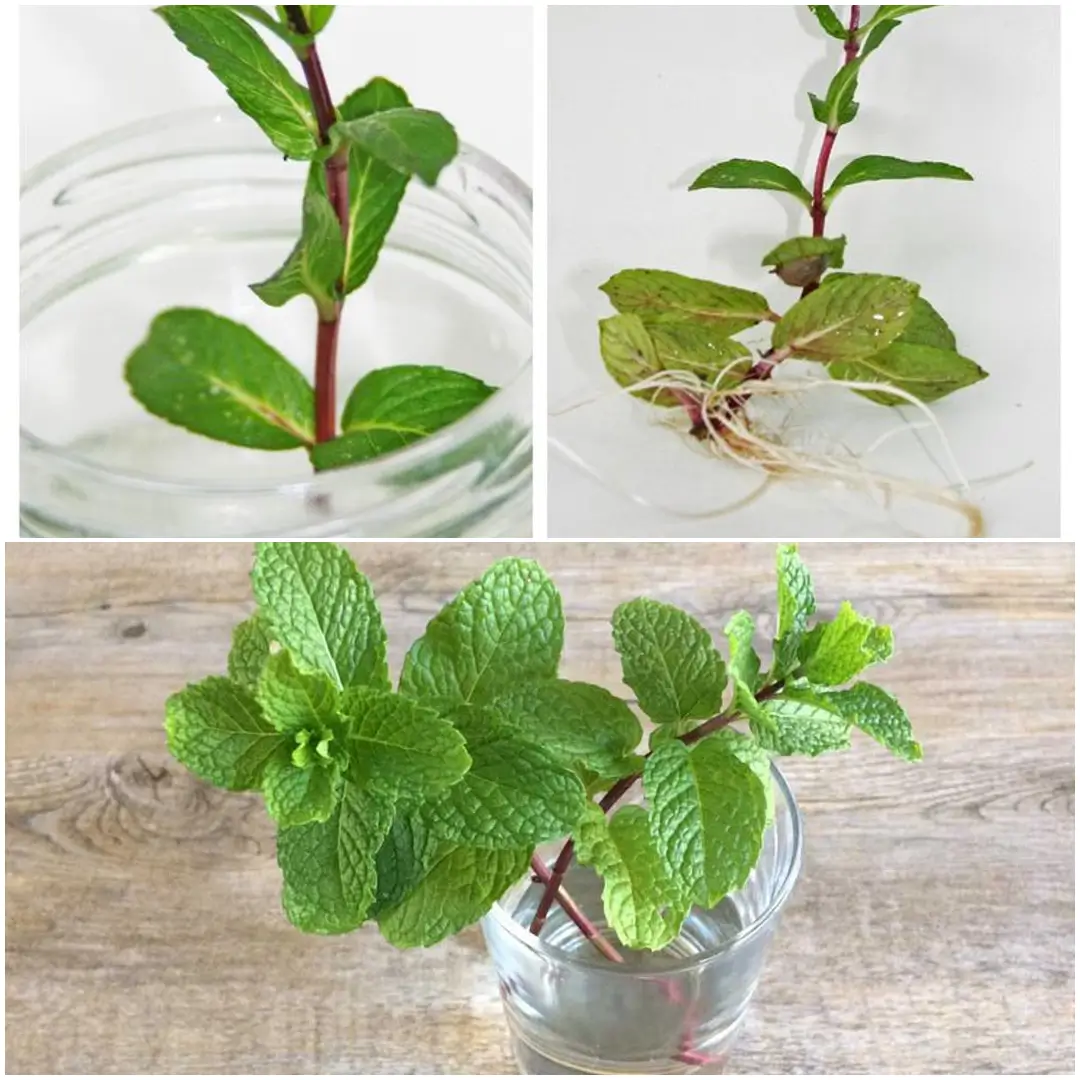Mint is one of those herbs that feels like a superstar in the garden, making it easy to grow mint at home. Not only does it boast a delightful aroma and flavor, but it’s also incredibly easy to grow! Whether you’re a seasoned gardener or just starting out, this guide will walk you through everything you need to know about how to grow mint successfully in your home garden. So grab your gardening gloves, and let’s dig in!
Growing Conditions for Mint
To kick off our journey into grow mint cultivation, let’s talk about where mint likes to thrive. If you want your mint to flourish, consider these essential growing conditions:
1. Moist but Well-Drained Soil
Mint loves moisture but hates soggy feet! The perfect soil for mint is moist yet well-drained. This means your mint can drink up what it needs without drowning. A good tip is to mix organic compost into your soil to improve drainage and fertility. It’s like giving your mint a nutrient-packed meal!
2. Sunlight Needs
Mint is pretty flexible when it comes to light. It prefers full sun to partial shade. If you can give it about six hours of sunlight daily, it will be a happy camper. Just keep in mind that in hotter climates, a little afternoon shade can help prevent the leaves from wilting.
3. Container vs. Ground Planting
Now, here’s a critical tip for anyone wondering how to grow mint without it taking over your garden: plant it in a pot! Mint is notorious for its invasive tendencies. By planting it in a pot, you can easily control its spread and keep it from competing with your other plants. If you’re feeling creative, you can also sink a bottomless bucket into the ground. This way, it looks like it’s in the ground, but the roots are kept in check!
How to Plant Mint
1. Choose Your Source
When it comes to planting mint, skip the seeds. Trust me, it’s much easier and more reliable to grow mint from root cuttings or young plants. This method gets you off to a great start without the hassle of seeds, which can be tricky and slow to germinate.
2. Soil Requirements
Mint thrives best in well-drained, fertile soil. If your garden soil is heavy, consider improving it with organic matter. Aim for soil that stays moist but never becomes waterlogged; think of it as keeping your mint cozy and comfortable!
3. Planting Technique
When planting mint, dig a hole deep enough to accommodate the roots without bending them. Place the root cutting or young plant in the hole, cover it with soil, and give it a good watering. This encourages those roots to settle in nicely. If you’re planting in a pot, choose one that’s at least 12 inches wide to give those roots room to grow.
Caring for Mint
Once your mint is planted, you’ll want to keep it happy and healthy. Here are some care tips to follow:
1. Regular Trimming
For the best flavor, don’t be shy about cutting mint regularly! This action stimulates new growth, leading to a bushier plant. Imagine pruning as giving your mint a haircut – the more you trim, the more fabulous it looks!
2. Seasonal Care
After your mint flowers in late summer, it’s time for a major haircut. Cut the plants back to just above soil level. This encourages new leafy growth for your autumn harvest. Also, applying a high-nitrogen fertilizer after cutting can give your mint the nutrients it needs to thrive.
3. Dividing Mint
In autumn, if your mint has become congested in its pot, it’s time for a little spring cleaning. Lift the clump and use a spade to chop it into pieces. Discard the old, woody center and replant the vigorous outer edges. This technique not only gives you more mint plants but also keeps your original plant healthy!
4. Avoid Waterlogging
If you’re growing mint in containers, use pot feet to elevate them. This simple trick prevents water from pooling at the bottom, especially during winter, ensuring your mint stays happy and healthy.
How to Harvest Mint
1. When to Start Harvesting
One of the best parts about how to grow mint is the ability to harvest it as soon as those lovely green leaves peek out in the spring. You can continue to harvest until the first frosts.
2. Harvesting Techniques
To get the best flavor, nip off the tips of the stems. This encourages your mint to grow bushier and produces more leaves for you to enjoy. Think of it as giving your mint a little encouragement to reach for the sky!
How to Store Mint
1. Freezing Mint
If you have a bumper crop of mint (which is likely), freezing is one of the best ways to preserve it. Here’s how to do it:
- Wash the mint leaves and dry them thoroughly.
- Chop the leaves finely.
- Fill an ice-cube tray with the chopped mint (no need to add water).
- Once frozen, transfer the mint cubes into freezer bags for later use.
2. Fresh Use Tips
While frozen mint is great for cooking later, nothing beats fresh mint. Toss it into salads, mix it with yogurt, or steep it in hot water for a refreshing tea. Your taste buds will thank you!
Pests and Diseases
1. Common Pests
Mint attracts some pesky little critters like aphids, caterpillars, and flea beetles. But don’t worry too much! They usually don’t cause significant harm to your mint plants. A quick shake of the foliage after harvesting should keep most of them away. And remember, always wash your leaves before using them in the kitchen!
2. Mint Rust
One disease to watch out for is mint rust, characterized by swollen stems and orange spots on the leaves. If you spot this, dig up the affected plant and dispose of it. Mint rust can linger in the soil for three years, so avoid replanting mint or similar herbs in that area for a while.
3. Mint Beetle
Mint beetles can also cause issues, but they typically don’t create serious damage unless there’s a large infestation. Regular monitoring and good gardening practices can keep these pests in check.
Mint Varieties to Grow
When considering how to grow mint, it’s also important to explore the different varieties available. Each has its unique flavor and characteristics:
1. ‘Banana’ Mint
This variety has a delightful peppermint taste with a hint of banana. It’s a fun addition to your garden and a fantastic conversation starter.
2. Bowles’s Mint
With large leaves and mauve flowers, Bowles’s mint is perfect for making mint sauce. It’s a classic choice that brings a burst of flavor to your dishes.
3. ‘Chocolate’ Mint
Imagine biting into a piece of chocolate. Now, picture that flavor in a mint plant! This non-invasive variety produces brown leaves that taste like after-dinner mints. It’s a treat for both your garden and your palate.
4. ‘Lime’ Mint
With dark green/purple leaves and mauve flowers, this variety offers a refreshing lime flavor. It’s also non-invasive, making it a lovely choice for those who want to enjoy mint without the worry of it spreading everywhere.
5. ‘Tashkent’ Mint
Known for its crinkled spearminty leaves and purple flowers, Tashkent mint adds a visual appeal to your garden while providing a distinct flavor.
6. ‘Variegata’ Mint
Also known as pineapple mint, this variety features cream-green leaves and a delightful pineapple scent. It’s non-invasive and perfect for those who want a unique mint variety.
Growing mint is not just easy; it’s also incredibly rewarding! With its fragrant leaves, culinary versatility, and ability to attract beneficial insects to your garden, mint is a must-have for any home gardener. By following the steps outlined in this guide on how to grow mint, you’ll be well on your way to cultivating a bountiful mint crop. Remember to provide the right growing conditions, care for your plants, and enjoy the delicious harvest that follows.
So, are you ready to get your hands dirty and grow your own mint? Trust me; you won’t regret it!
FAQs
1. How can I grow mint at home?
To grow mint at home, choose a pot or a garden bed with well-drained, fertile soil. Plant mint from root cuttings or young plants instead of seeds. Ensure it receives about 6 hours of sunlight a day and keep the soil moist but not waterlogged. Regularly trim the plant to encourage bushy growth and prevent it from becoming leggy.
2. Is mint easy to grow?
Yes, mint is very easy to grow mint! It’s a hardy herb that thrives in various conditions, making it perfect for beginners. With minimal care, you can enjoy a fresh supply of mint for cooking and beverages.
3. Can I grow mint from a cutting?
Absolutely! Mint grows very well from cuttings. Simply take a healthy stem cutting, place it in water until roots develop, and then transplant it into soil. This method is an effective way to propagate your favorite mint varieties.
4. Does mint require sunlight?
Mint prefers full sun to partial shade, thriving best with about 6 hours of sunlight daily. To grow mint successfully, it’s important to provide these light conditions. However, it can also tolerate some shade, especially in hotter climates where afternoon sun can be too intense.


